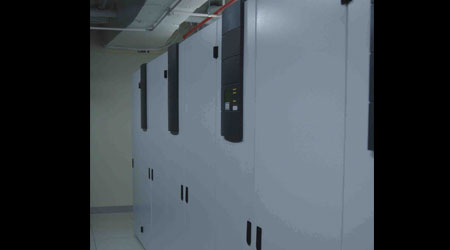6 Tips to Prevent Electrical Switchgear Downtime
Prevent common problems, avoid costly issues. Here are six strategies for avoiding electrical switchgear downtime.
The COVID-19 pandemic reinforced the importance of paying attention to details to ensure power and cooling reliability. By paying attention to the basics, facility managers who are responsible for data centers and other critical facilities can reduce unplanned downtime. A good starting point is to understand ways to prevent common problems. These tips can help facility managers avoid costly issues, especially if limited staff is working onsite.
Electrical switchgear
Panel board, switchboard and switchgear structures, bus work, metering, and controls are fairly stable. Little goes wrong with fused switches. Circuit breakers, on the other hand, are a major source of unplanned power interruption. They are designed to trip with seemingly hair-trigger sensitivity. And once open, if something is not exactly right with the breaker, it will not allow reclosing. Why is this? Circuit breakers are life-safety devices. When in doubt, the manufacturers want them to fail safe and trip open and remain open. The alternative could result in overload, arc-flash, explosion, or fire with significant liability. Here are some tips to reduce critical breaker downtime risk:
1. Make sure breakers with adjustable trip settings are adjusted properly, or at least dialed up from minimum (most trip-happy) setpoints. Most breakers ship from the factory with adjustments at minimums (to reduce risk and liability). Many electrical contractors will install or replace adjustable breakers but won’t touch adjustments unless setpoints are provided to them.
2. All facilities, regardless of criticality, should maintain an up-to-date over-current protective device coordination study and associated trip adjustments and arc-flash hazard labeling. For most critical facilities, selective coordination is less important than making sure breakers are not set too sensitively. The software used by engineers to perform the study errs toward breaker tripping. Any adjustment on any critical breaker that is set at or very near the minimum should raise a red flag — it is an unplanned shutdown waiting to happen.
3. Circuit breakers are not as forgiving of overloads as other equipment. Overloaded breakers won’t slow the motors or dim the lights; they will stop the motors and turn off the lights. Most breakers should never be continuously loaded beyond 80 percent of frame rating or beyond 90 percent of trip rating.
4. Test new breakers before applying in critical situations. Large breakers should be primary-current injection tested. Small molded case breakers should be bench-tested as a minimum against short circuits and open circuits, and in case one or more poles don’t open or close with the other poles.
5. Old breakers (and switches) that have not been exercised in years (opened and closed) should be exercised during maintenance (higher risk) windows.
6. No matter how careful you are with circuit breakers (unlike fuses) they can still nuisance-trip when new and fully tested even at very light loads. Good critical power design never allows a breaker or switch to become a potential single point failure risk.
Related Topics:















